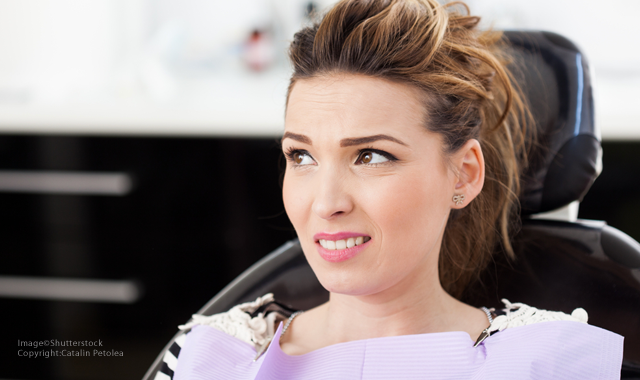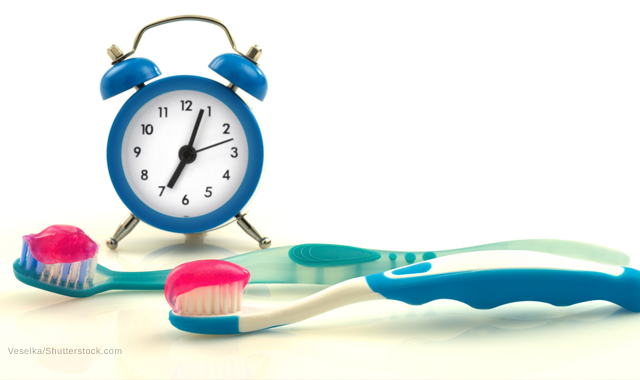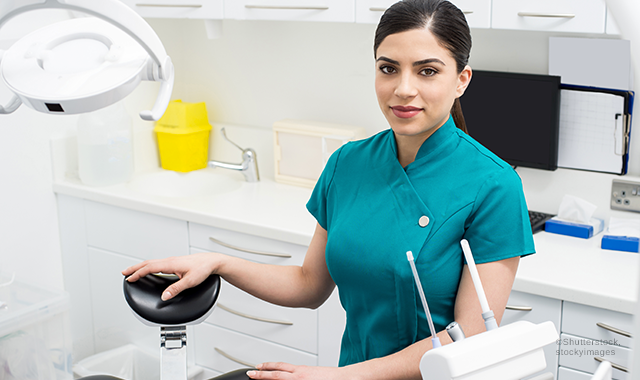The devil wears a patient bib
Despite your best efforts, there will be times when you’re simply unable to appease an unreasonable patient.
As dental professionals, we’re trained to approach our care with kindness and empathy to our patients. Throughout our time in hygiene school, we learn about the fears our patients present with and varying techniques we can use to ensure patient comfort during the dental experience. Into our careers in clinical practice, we collaborate with team members in supporting our patients, providing excellent patient care and, ultimately, ensuring patients are pleased with their care.
Nevertheless, there are times when, despite our greatest efforts, we still struggle to provide our patients the level of care they expect from us. In a world where dental practices are consistently occupied with ensuring patients are happy and their subsequent Yelp reviews are positive, I believe many practices work tirelessly to bend over backwards in appeasing patients.
More from the author: Is dentistry moving in reverse?

While a reasonable patient will recognize extraordinary effort in delivering the upmost in patient care and be appreciative, an unreasonable patient will remain unsatisfied despite your best efforts. While I speak internationally on elevating the standards of the dental community and encouraging the professional the identify unique ways to connect with his or her patients in a deeper way, I also believe dental professionals should forgive themselves for the times when they’re simply unable to appease an unreasonable patient.
Here is my ode to the unreasonable: the top three types of patients whose names pop up on our schedules and already set the tone for the day. The patients whose unique needs go beyond that of what a clinical hygienist should feel responsible for. The patients who ultimately make our days more difficult than they should be.
So, pour yourself a glass of vino and enjoy-you’re not alone.
Click through the slides to read more.


1. The toxic saliva patient
They’ve been in your chair for less than one minute and already their mouths begin to swell with salivary secretions. It happens, as we all understand the normal flow of saliva in a healthy patient. This time, it’s different. Something appears to be wrong with their ability to swallow.
At first, you ignore it. I mean, the other 99.97 percent of their life they’re able to effectively swallow their own saliva. Why should the dental chair be any different? You continue your prudent work by reviewing their medical history, getting vital signs and asking the patient about how his or her day is going. Your patient delivers short responses between the tell-tale gargles of abundant saliva. Why can’t they just…swallow?
Trending article: Beware fake dental news
You move on to setting up your equipment to take radiographs and ask him or her to open only to find a tiny pond of serous saliva bathing the sublingual caruncle. Here it comes: the courtesy visit from Mr. Thirsty. Whew, that was a close one!
Just when you thought things were under control, your patient is overcome by more un-swallow-able saliva! It’s only a matter of time before his or her lips purse into the “Mr. Thirsty under the mistletoe” face.
The number of times you set your instruments down to retrieve Mr. Thirsty would be enough to set you back in your hygiene hour, let alone the amount of time your patient spends lip-locked to poor Mr. Thirsty who, quite frankly, doesn’t receive enough credit for the good work he does.
I wish I understood the psychology of the patient who believes his or her salivary secretions are some sort of toxic, highly poisonous solution unfit for consumption. Nevertheless, it’s a hazard of working in dentistry. My suggestion: give the patient some quality time with Mr. Thirsty. Permit him or her to hold the slow-speed suction and give the patient full control over his or her own salivary situation. If nothing else, it gives you your own assistant for an hour.



2. The perpetually tardy patient
You start to get the tingle in the center of your heart. It’s not to say we DON’T want to treat patients, but having a patient no-show does give the hardworking hygienist some down time to catch up on clinical notes, sharpen instruments, organize drawers, or, dare I say, take a sip of water and use the restroom.
It's nearly 10 minutes into your hygiene hour and still no patient Your front office calls and is able to reach the patient! The verdict: he or she is just parking and will be in shortly.
Hooray.
More from the author: Veterinary dentistry barks up the right tree
After another five minutes goes by. Your patient must want to make sure he or she parks perfectly in the lines. Here he or she comes, waltzing in the door, full Starbucks in hand, with one request: “Where’s the bathroom?”
You’re now one-third of the way into the appointment time you had available and are expected to deliver the hygiene appointment of the century on a patient who’s incapable of kindness or sincerity in apologizing for disrespecting your time.
We’ve all been there.
The truth is that a patient who’s dismissive of an appointment time likely doesn’t value the time he or she has scheduled in your chair. Often these are patients who cause you to run over your hygiene hour and, as such, their disrespect for your time now affects the timeliness with which you care for your next patient.
My suggestion: this is an opportunity for the office to discuss its policies. Some patients are one-time offenders. But for patients who are repeat offenders, consider advising the patient that his or her appointment time is 15-20 minutes earlier than actually scheduled. If this doesn’t work, consider advising the patient that all you have time for today is radiographs and an examination, and then reschedule his or her hygiene care for another time. A patient who was expecting a solid prophy paste polish will be disappointed but will learn his or her lesson and the bottom line of your practice.



3. The couch potato
“Susan, come on back, I’m ready for you.” Just as you say it, you’re wishing you could suck back up your words. “Grab a seat, Susan, and make yourself comfortable.”
Without hesitation, Susan takes off her shoes, grabs her phone, and advises you that every two-and-a-half minutes she’ll need the appointment to pause so that she can apply liberal amounts of Vaseline to her lips.
In the less than five minutes that she’ll be expected to sit in the upright position, she’s expecting you to nearly dismantle your headrest to ensure your chair aligns perfectly with the curvature of her spine. You know where this is going.
You tap the button to begin tipping her back, and it’s as if you tossed her on a wild rollercoaster ride without a harness. “WHOA there!” she bellows, turning her eyes to you in a state of distress. “I can’t go back too far!” she says. You’ve tipped her back about 1.5 inches at this point.
Related reading: The top 16 worst dental patients ever
“If this whole hygiene gig doesn’t work out, I could join Cirque du Soleil” you think to yourself as you begin contorting in unnatural positions to ensure Susan isn’t inconvenienced. Oh wait, she needs a neck pillow. And some headphones too. “Shouldn’t this be written in my chart? The other girl always gets these things for me,” she says.
Halfway through your hygiene appointment, you’ve got Susan tucked into the office blanket and you’re begging her to stop talking so that the nitrous oxide will take effect (or hoping she keeps talking to send some nitrous your way) while wondering if her next request will be for a bowl of all green M&Ms and bottomless mimosas.
My suggestion: be patient. While we’re used to the sights, sounds and smells of a dental office, many patients experience varying levels of anxiety when visiting the dental office. People behave in unique ways when they’re stressed, fearful or concerned. Another important technique is to give yourself the opportunity to document how the Susans of the world like their appointments to run. You’d be surprised how pleased Susan will be when you’ve got the entire spa ready to go for her next appointment.
Finally, if you find that you have several patients in your office who experience the same or advanced levels of anxiety, consider having a companion animal in the office, such as a Canine Good Citizen dog for comfort.



Conclusion
If nothing else, my hope is that this article helped you to recognize that you’re absolutely not alone in experiencing patients who present with “unique” needs during their dental appointment.Despite this, I believe we have opportunities to take greater control over the events in our dental chair, and with collaboration between our fellow team members, we have the ability to make our days.
May your scrub pants’ waistband be stretchy, your coffee be strong and your clinical day be effortless.
Best of luck!
